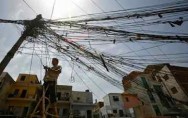
Why India’s power grid collapsed – and what to do about it
Just a few days ago 10 per cent of the world’s population faced a series of power cuts – India’s Northern and Eastern grids came to halt and 600 million people were confronted with the delicate state of their nation’s electricity grid.
The reason for the power failure is complex, and you can read more detail below, but essentially it came down to one thing: the power system had recently been transformed from a system to move electricity around this massive country into a system to trade electricity.
“Power stations, which earlier had to be very sensitive to shifts in demand within their region over the course of the day, can now export their surpluses to where its needed,” the Economic Times proudly announced today. “But the pricing mechanisms and regulatory frameworks need to match up with the physical development. Bigger systems require better regulatory oversight – the costs of failure can be huge in a large system,” it says.
These days, India has something approaching one national grid, since a decision last decade to bolt together several regional grids. And the connections joining these sub-grids together are both too complex to be managed easily, and insufficient to handle partial failures elsewhere in the system.
The solution is to diversify the power supply from the current state-owned monopolies to allow private investment of every size and kind – particularly the establishment of micro-grids based on renewable energy, which could be partially connected to the main system and would add huge resilience were the same thing to happen again in the future.…